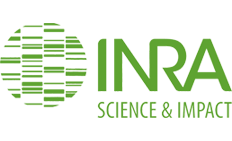
Over the past 40 years, INRA refined its ruminant diet formulation calculation model. This new 2018 version results in many changes. The renovated system can take account of new animal nutrition challenges: animal production responses, milk and meat quality, animal health, greenhouse and nitrogen emissions, in broad range of nutritional contexts.
The new system takes into account the digestive interactions and predicts nutrients flows, so that the final nutrive values of the feed depend on the diet itself.
Large databases have been created, repesenting as much as possible the diversity of feeding practices and livestock production system in the world to ensure a large field of application.
Those databases have been interpreted by statistical meta-analysis




- No change : UE, UF, PDI notions
- Change : energy and nitrogen requirements, digestive interactions, UF and PDI feed values of the feed tables
New criteria
- Rumen Protein Balance (RBP). Practical standpoint : microorganisms have enough degradable nitrogen to fit available energy in the rumen.
- Intake Leval (IL) : kg DMI / 100 kg weight.
- Variable protein efficiency depending on the diet nitrogen level
New concept
- Feed values depend on the diet composition. Therefore the nutritive feed values of the feed tables become only guide values
New calculations
- The intake capacity (IC) depending on the nitrogen level of the diet.
- Milk yield responses to dietary changes.
- Nutrients flows (VFA, glucose, …).
- Prediction of methane emissions, urinary and faecal nitrogen excretion.
Discover the full range of those inovations in the last “red book” edition available through QUAE Editions :
https://www.quae.com/produit/1523/9782759228683/alimentation-des-ruminants
